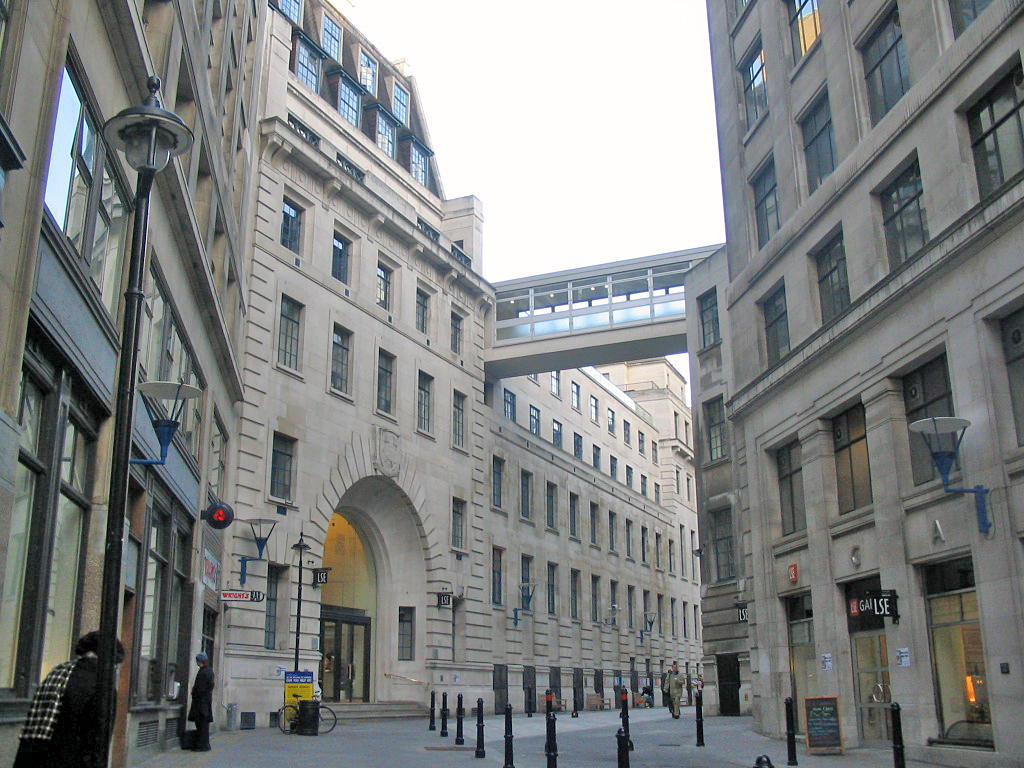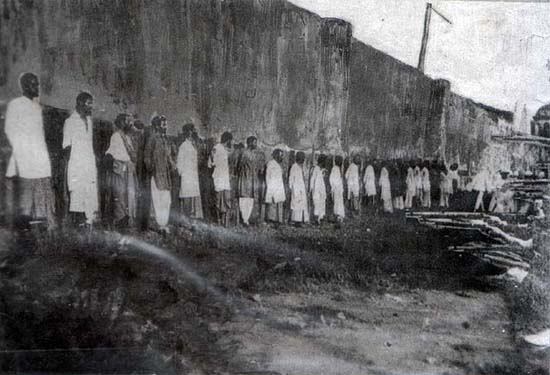|
Internal Security Department (Singapore)
The Internal Security Department (ISD) is the domestic intelligence, counter-espionage, counterterrorism, and primary security agency of Singapore under the purview of the Ministry of Home Affairs (MHA). It is tasked to confront national security threats ranging from subversion or sedition, foreign influence, spying or espionage, domestic or international terrorism, and political or racial/religious extremism. Deputy Prime Minister Goh Keng Swee stated that 'an efficient secret police' was necessary to counter dangers such as insurgencies and violent rebellions. The ISD is empowered to conduct mass surveillance and covert security operations; it has the utmost right to indefinitely detain without trial individuals suspected to be a threat to national security. Although the agency falls under MHA, it is autonomous within the ministry. It is led by a director, who holds the rank equivalent to a permanent secretary, and reports directly to the Prime Minister's Office (PMO). ... [...More Info...] [...Related Items...] OR: [Wikipedia] [Google] [Baidu] |
Goh Keng Swee
Goh Keng Swee (born Robert Goh Keng Swee; 6 October 1918 – 14 May 2010) was a Singaporean statesman and economist who served as the second Deputy Prime Minister of Singapore between 1973 and 1985. Goh is widely recognised as one of the founding fathers of Singapore.. He was also one of the founders of the People's Action Party (PAP), which has governed the country continuously since independence. Goh was a prominent member of the country's first generation of political leaders after Singapore became independent in 1965. He served as Minister for Finance between 1959 and 1965, and again between 1967 and 1970, Minister for Interior and Defence between 1965 and 1967, Minister for Defence between 1970 and 1979 and Minister for Education between 1979 and 1985. As Minister for Interior and Defence, Goh's main objective was to strengthen the country's military and domestic security capabilities after the British had withdrawn its troops from Singapore, which made the newly-in ... [...More Info...] [...Related Items...] OR: [Wikipedia] [Google] [Baidu] |
Ministry Of Interior And Defence
The Ministry of Interior and Defence (MID) was a ministry (government department), ministry of the Government of Singapore. It was established in 1965, with Goh Keng Swee as the inaugural minister. The ministry was responsible for both internal and external security, controlling both the Singapore Police Force, police force and the Singapore Armed Forces, armed forces. As the differences between the police force and the armed forces became more defined, the ministry was eventually split into the current Ministry of Defence (Singapore), Ministry of Defence (MINDEF) and the Ministry of Home Affairs (Singapore), Ministry of Home Affairs (MHA) on 11 August 1970. History Following Independence of Singapore Agreement 1965, Singapore's independence from Malaysia in 1965, the nation faced significant security concerns. Externally, Singapore's leadership feared that Ultra (Malaysia), Malay Ultras opposing the separation could influence Malaysian forces stationed in Singapore to act agains ... [...More Info...] [...Related Items...] OR: [Wikipedia] [Google] [Baidu] |
Singapore Police Force
The Singapore Police Force (SPF) is the national and principal Police, law enforcement agency responsible for the prevention of crime and law enforcement in the Republic of Singapore. It is the country's lead agency against organised crime; human and weapons trafficking; cyber crime; as well as economic crimes that goes across domestic and international borders, but can be tasked to investigate any crime under the purview of the Ministry of Home Affairs (Singapore), Ministry of Home Affairs (MHA) and is accountable to the Parliament of Singapore. SPF's main geographical area of responsibilities covers the entire country, consisting of five Regions of Singapore, regions which are further divided into 55 Planning Areas of Singapore, planning areas. The organisation has various staff departments with specific focuses. These include the Airport Police Division (APD), which covers policing of Singapore's main civilian airports of Changi Airport, Changi and Seletar Airport, Seletar, o ... [...More Info...] [...Related Items...] OR: [Wikipedia] [Google] [Baidu] |
Malayan Communist Party
The Malayan Communist Party (MCP), officially the Communist Party of Malaya (CPM), was a Marxist–Leninist and anti-imperialist communist party which was active in British Malaya and later, the modern states of Malaysia and Singapore from 1930 to 1989. It was responsible for the creation of both the Malayan Peoples' Anti-Japanese Army and the Malayan National Liberation Army. The party led resistance efforts against the Japanese occupation of Malaya and Singapore during World War II, and later fought a war of national liberation against the British Empire during the Malayan Emergency. After the departure of British colonial forces from the Federation of Malaya, the party fought in a third guerrilla campaign against both the Malaysian and Singaporean governments in an attempt to create a communist state in the region, before disbanding in 1989. Today, due to historical connotations surrounding the MCP, communism as an ideology remains a taboo political topic in both ... [...More Info...] [...Related Items...] OR: [Wikipedia] [Google] [Baidu] |
Japanese Occupation Of Malaya
Malaya, then under British administration,, was gradually occupied by Japanese forces between 8 December 1941 and the Allied surrender at Singapore on 15 February 1942. The Japanese remained in occupation until their surrender to the Allies in 1945. The first Japanese garrison in Malaya to lay down their arms was in Penang on 2 September 1945 aboard . Prelude The concept of a unified East Asia took form based on an Imperial Japanese Army concept that originated with Hachirō Arita, who served as Minister for Foreign Affairs from 1936 to 1940. The Japanese Army said the new Japanese empire was an Asian equivalent of the Monroe Doctrine, especially with the Roosevelt Corollary. The regions of Asia, it was argued, were as essential to Japan as Latin America was to the U.S. The Japanese Foreign Minister Yōsuke Matsuoka formally announced the idea of the Co-Prosperity Sphere on 1 August 1940, in a press interview,James L. McClain, ''Japan: A Modern History'' p. 470 but i ... [...More Info...] [...Related Items...] OR: [Wikipedia] [Google] [Baidu] |
Japanese Occupation Of Singapore
, officially , was the name for Colony of Singapore, Singapore when it was occupied and ruled by the Empire of Japan, following the fall and surrender of British military forces on 15 February 1942 during World War II. The Japanese military forces occupied Singapore after defeating the combined British Army during the Second World War, British, British Raj, Indian, Australian, British Malaya, Malayan and the Straits Settlements garrison in the Battle of Singapore within 7 days. The occupation was to become a major turning point in the histories of several nations, including those of Japan, Britain, and Singapore. Singapore was renamed Syonan-to, meaning "Light of the South Island" and was also included as part of the . Singapore was officially returned to British colonial rule on 12 September 1945, following the formal signing of the surrender at the Municipal Building, Singapore, Municipal Building, currently known as City Hall. After the return of the British, there was gr ... [...More Info...] [...Related Items...] OR: [Wikipedia] [Google] [Baidu] |
World War II
World War II or the Second World War (1 September 1939 – 2 September 1945) was a World war, global conflict between two coalitions: the Allies of World War II, Allies and the Axis powers. World War II by country, Nearly all of the world's countries participated, with many nations mobilising all resources in pursuit of total war. Tanks in World War II, Tanks and Air warfare of World War II, aircraft played major roles, enabling the strategic bombing of cities and delivery of the Atomic bombings of Hiroshima and Nagasaki, first and only nuclear weapons ever used in war. World War II is the List of wars by death toll, deadliest conflict in history, causing World War II casualties, the death of 70 to 85 million people, more than half of whom were civilians. Millions died in genocides, including the Holocaust, and by massacres, starvation, and disease. After the Allied victory, Allied-occupied Germany, Germany, Allied-occupied Austria, Austria, Occupation of Japan, Japan, a ... [...More Info...] [...Related Items...] OR: [Wikipedia] [Google] [Baidu] |
1915 Singapore Mutiny
The 1915 Singapore Mutiny, (also known as the 1915 Sepoy Mutiny or the Mutiny of the 5th Light Infantry) was a mutiny of elements of the British Indian Army's 5th Light Infantry in British Singapore. Up to half of the regiment, which consisted of Indian Muslims predominantly from Rajput background, mutinied on 15 February 1915 due to rumours that they would be sent to fight against the largely Muslim Ottoman Empire as part of the Middle Eastern theatre of World War I. The mutineers killed 36 soldiers and civilians before the mutiny was suppressed by Allied forces. After the mutiny, more than 205 mutineers were tried by court-martial, and 47 were sentenced to execution by firing squad. Background 5th Light Infantry The 5th Light Infantry was a long established regiment in the Indian Army, dating from 1803. and had a good military record. It was initially known as the 2nd Battalion, 21st Bengal Native Infantry and was re-designated as the 42nd Bengal Native (Light) Inf ... [...More Info...] [...Related Items...] OR: [Wikipedia] [Google] [Baidu] |
Prime Minister's Office (Singapore)
The Prime Minister's Office (PMO; ; zh, 总理公署; ) is the executive branch of the Government of Singapore responsible for overseeing the other ministries and political matters that are of great importance to the nation, such as tackling corruption and holding elections. It is headed by the prime minister and other appointed ministers. The PMO is located in The Istana, which is also the official residence and office of the President of Singapore. In Singapore, a Member of Parliament (MP) appointed as 'Minister in the Prime Minister's Office' was previously known as 'Minister without Portfolio', an official cabinet appointment title under the Westminster parliamentary system. Statutory boards The PMO oversees 14 statutory boards;https://www.sgdi.gov.sg/ministries/pmo * Corrupt Practices Investigation Bureau (CPIB) * Monetary Authority of Singapore (MAS) * Civil Service College (CSC) * Elections Department Singapore (ELD) * Public Service Division (PSD) See also ... [...More Info...] [...Related Items...] OR: [Wikipedia] [Google] [Baidu] |
Permanent Secretary
A permanent secretary is the most senior Civil Service (United Kingdom), civil servant of a department or Ministry (government department), ministry charged with running the department or ministry's day-to-day activities. Permanent secretaries are the non-political civil service chief executives of government departments or ministries, who generally hold their position for a number of years (thus "permanent") at a ministry as distinct from the changing political secretaries of state to whom they report and provide advice. The role originated in the Civil Service (United Kingdom), civil service of the United Kingdom and has been adopted in several Commonwealth of Nations, Commonwealth countries as well as other countries influenced by the Westminster system. Country Australia In Australia, the position is called the "department secretary", “secretary of the department”, or “director-general of the department” in some states and territories. Canada In Canada, the senio ... [...More Info...] [...Related Items...] OR: [Wikipedia] [Google] [Baidu] |




